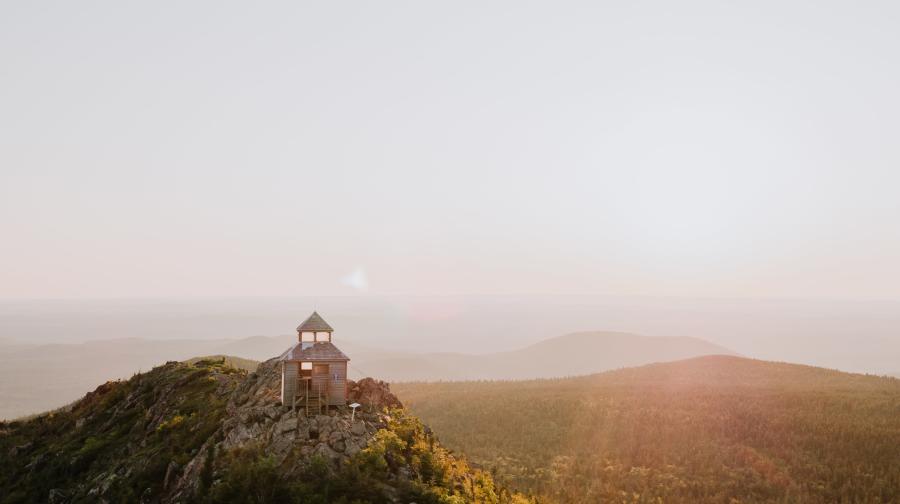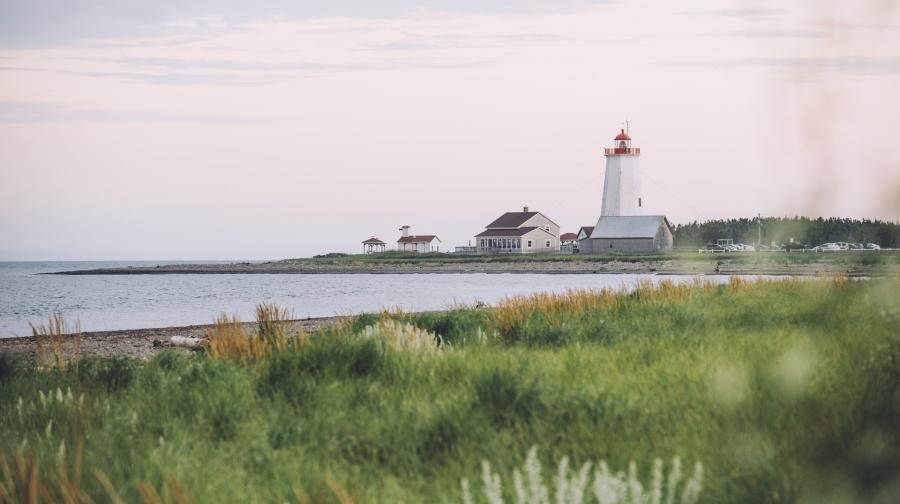Far be it from me to claim that I have travelled far and wide to practise my passion of birding, but when it comes to New Brunswick, I know it inside out! I’ve had the chance to live some wonderful adventures in search of the maximum number of species and rare birds. My passion has allowed me to visit every corner of this province with its generous avian biodiversity.
After more than 35 years of birding here, I have come to the conclusion that New Brunswick is a totally underrated birding destination in Eastern Canada.
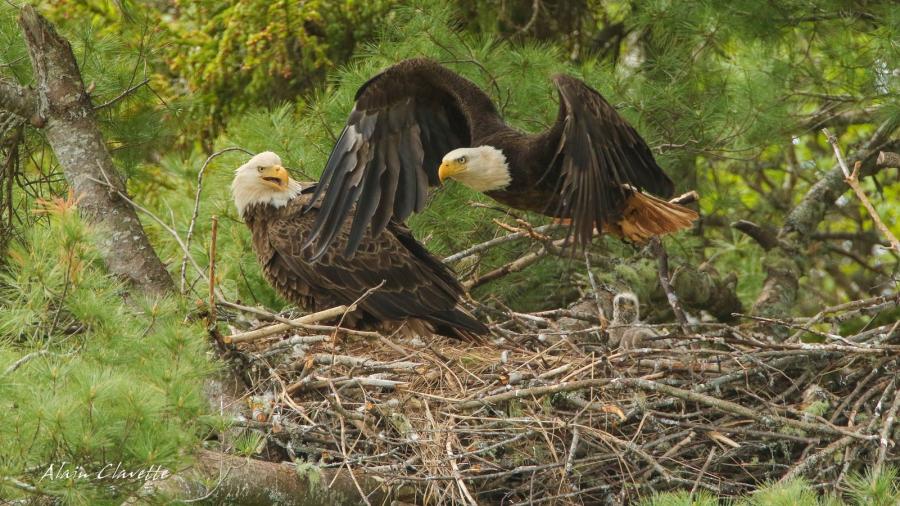
I have heard a lot!
- From the songs of warblers of all species that scroll like a playlist as you float down the Restigouche River in the spring, to the "swoosh" of the wings of thousands of sandpipers on a mudflat in the Bay of Fundy in the summer, interspersed with the shrill cries of a young peregrine falcon and his parents in the middle of a hunting lesson.
- The nasal cries of dozens of Greater Shearwaters – born on the other side of the world off the coast of South Africa – mingled with those of gulls surrounding a boat on the Bay of Fundy in September.
- The bubbling song of the rare Bicknell's Thrush on top of Mount Sagamook in the early evening of June.
- A Tengmalm's Owl filling a starry night with its repetitive song on the edge of a bog on Miscou Island in late March.
- Through the night, numerous Common Loons answer each other from the four corners of Spednic Lake in July, while a family of Barred Owls engage in a large-scale cacophony a few metres above my tent.
I have seen a lot!
- Hundreds of Northern Gannets hitting the surface of the water like missiles in pursuit of fish in April at the end of a Northumberland Strait wharf.
- Hundreds of Puffins enveloping Machias Island, a small Rocky Island in the Bay of Fundy, in July.
- Thousands of Bonaparte Gulls and other larids feasting in a giant whirlpool at the end of Deer Island in September.
- A Snowy Owl on the right, a Rough-Legged Hawk on the left and a very rare golden eagle in front in the huge Tantramar Marsh in January.
- Thousands upon thousands of migrating scoters rest at the confluence of the Restigouche River and Chaleur Bay in April and seemingly cover the surface of the water as far as the eye can see.
- The colourful display of more than twenty species of warblers in places like Grand Manan Island in May can be an adrenaline rush for the enthusiast.
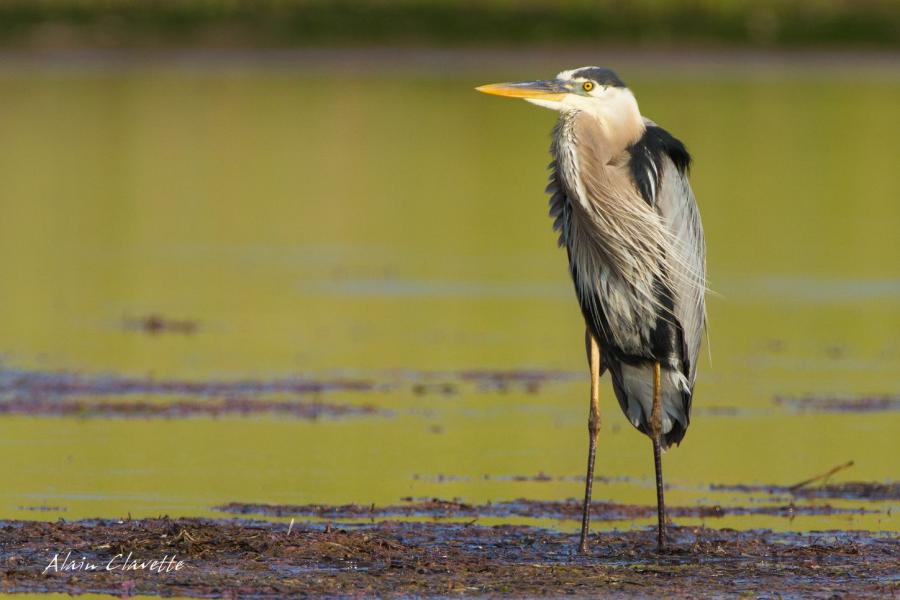
How can you enjoy it?
By planning your birding trip in advance, you will be able to establish a list of target species to see by visiting a variety of habitats in New Brunswick’s bountiful nature.
It is important to understand that New Brunswick has two marine ecosystems that are significantly different from each other. To the east is the Northumberland Strait and the Gulf of St. Lawrence and to the south is the prolific Bay of Fundy. To find huge quantities of Semipalmated Sandpipers gathered on mud flats uncovered by the highest tides in the world, the Bay of Fundy is where it’s at! However, the Northumberland Strait and Chaleur Bay coasts have a greater diversity of shorebirds. The Maisonnette Dune in August is a paradise for the observer who wants to walk barefoot in the sand with their spotting scope or telephoto lens.
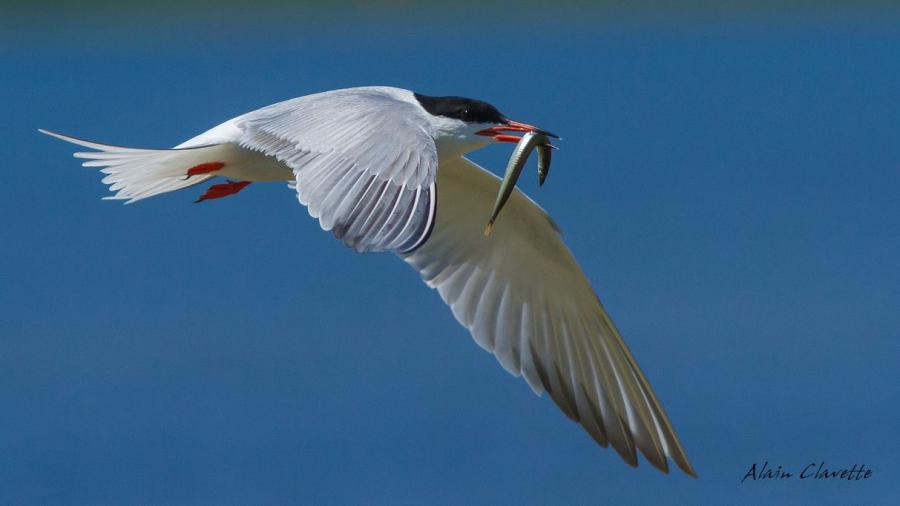
Interesting Migrations
The reality is that our beautiful province contains hundreds and hundreds of kilometres of coastline suitable for the staging of more than twenty species of shorebirds – starting in late July and continuing, with less intensity, until October. The concentration of songbirds that migrate in spring on islands or points of land that jut out from the coast can sometimes be spectacular. Each year, in mid-May, many birders spend a few days on Grand Manan Island and White Head Island in the Bay of Fundy...or sometimes on Miscou Island, a birding paradise on the northeastern tip of the province.
The autumn migration of passerines takes on a special character in the Maritimes. In New Brunswick, one can experience days of abundance of species and great numbers of individuals that will fulfill any birdwatcher’s dreams. From the end of August until mid-October, sometimes even later, large numbers of songbirds born on the eastern portion of the Canadian Shield will head to the east coast of the continent before making their long journey south. Plan to spend time in key areas such as Grand Manan Island, Miscou Island, river estuaries or points of land jutting into the sea. You'll find a diversity of habitats within protected areas and publicly accessible parks that offer you the chance to observe many bird species.
But New Brunswick offers so much more to the birdwatcher. You have to make sure to get in touch with local birding groups, either through social media or simply through specialized birding websites. There is often a little-known trail or path that takes you to a particular habitat in the area that can be suggested. For example, early in the spring you will find sewage lagoons in almost every village that will be teeming with waterfowl of all kinds, and in large numbers since New Brunswick is on the migration route of many species of ducks and geese. These places are not touristy but will greatly please the birdwatcher. That’s why it’s important to get in touch with local enthusiasts who will be able to point out these little treasures that you should not miss when to New Brunswick.
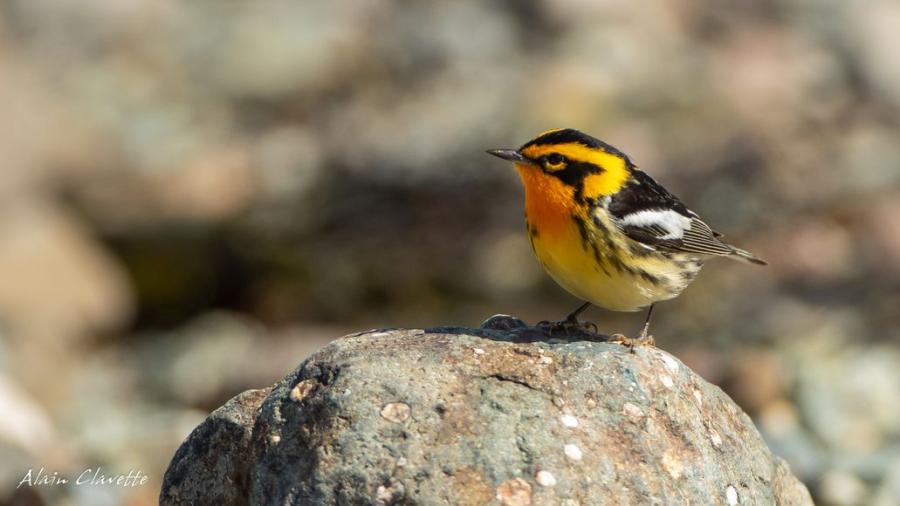
Set your sights on the Bay of Fundy
Birdwatchers who organize their trip a long time in advance may be lucky enough to reserve a place on a very limited, but unforgettable excursion. Located in the southern part of the Grand Manan Islands, Machias Island is home to a colony of puffins that will give a breathtaking show to any observer lucky enough to get there. The few minutes spent inside a cache directly in the puffin colony with the birds just a few metres away from your eyes is an experience that will stay in your memory forever. Due to the fragile nature of the resource, only one company offers this excursion. To experience this excursion, you must take the boat from Seal Cove on Grand Manan Island, but places are very limited and are booked well in advance. Puffins are generally a target species for birdwatchers, and it should be noted that it is rare but possible to see them from the Grand Manan Island ferry throughout the summer season. Of course, observation will not be easy and you must be on the lookout with your binoculars at all times during the crossing.
The Bay of Fundy will offer a birding product that is absolutely unique in the east from late July to late September with spectacular sea bird sightings. Southern Hemisphere nesting pelagic birds, such as the Sooty Shearwaters or the Greater Shearwaters, will not touch land until they return to their home islands off South Africa. But also pelagic birds that nest in the Northern Hemisphere far into the Arctic, like the Great Skua or the Pomarine Jaegers. At times, you can see Northern Gannets, especially when they have left the large colony of Bonaventure Island in Quebec. Wilson's Storm-Petrels and Leach’s Storm-Petrels are present in thousands offshore. Other pelagic species that can be seen include the Northern Fulmar, Parasitic Jaeger, South Polar Skua, Manx Shearwater, and Common Mure. The abundance of food produced by the Bay of Fundy's high tides will also attract a variety of marine mammals that mingle with the seabirds for a heart-warming celebration of life.
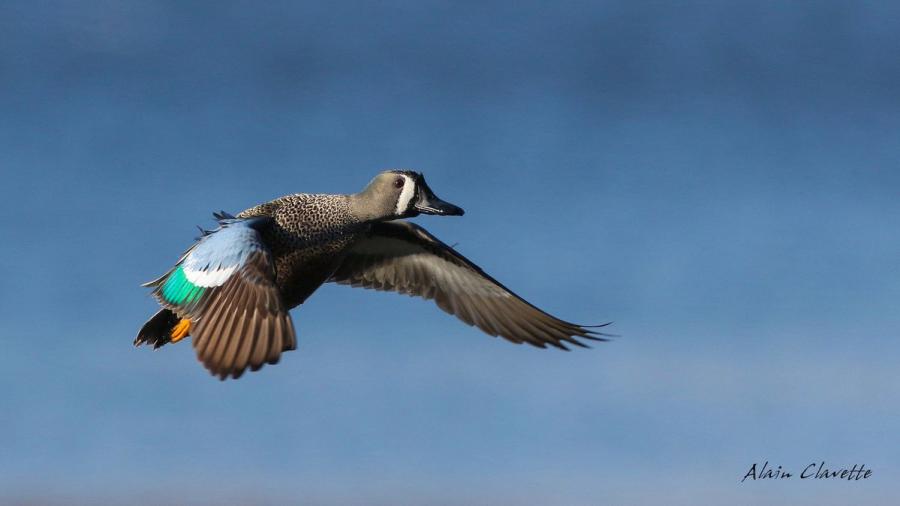
Soaring to new heights in the Appalachian Mountains
Another adrenaline-filled experience for the avid birder is the climb to Mount Sagamook and Mount Carleton, which will take the bird watcher to the highest peaks in the province. It is like being on the tundra with very rocky soils, curled up trees and alpine boreal vegetation – this region is home to species such as the Fox Sparrow and the Blackpoll Warbler.
But the big star here is one of the rarest birds in Canada, the famous Bicknell's Thrush. Seeing it with your own eyes is a privilege that only a few can enjoy, as Bicknell's Thrushes lead a rather secretive life. But hearing its melodious, bubbling song is possible if you are on the peaks at dawn or dusk around the first three weeks of June.
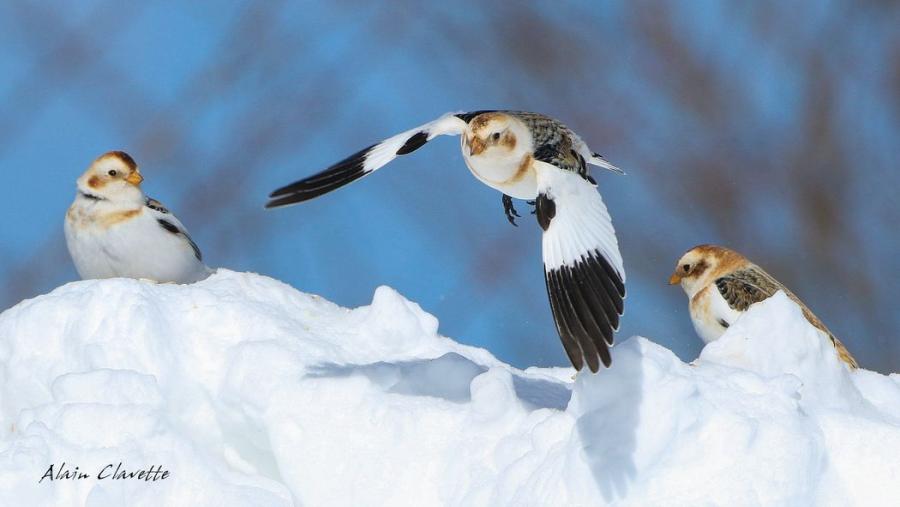
Winter Birding in New Brunswick
Winter in New Brunswick will not leave the birder out in the cold. The Bay of Fundy, with its high tides, doesn’t freeze over. Thus the tidal action provides good salt marshes around the Bay of Fundy for some waterfowl and other birds. The river estuaries and the unfrozen portions of the coastline will offer concentrations of sea ducks such as Red-Breasted and Common Mergansers, Common Goldeneyes and Barrow's Goldeneyes, Long-tailed Ducks and Common Eiders, Surf and Black Scoters... to name only a few! All crop fields and large open spaces such as salt marshes can produce sightings of wintering raptors such as the Rough-legged Hawk which winters in fairly large numbers in the southern part of the province especially. Snowy Owls or even other species of owl can sometimes be observed looking for dinner; always a delight on a winter day in the wild.
The Laridae enthusiast will never be disappointed in New Brunswick because we have lots of marine habitats! So gulls are a dime a dozen! The Tidal Bore in Moncton in winter is an attraction that also attracts Larids. In fact, in the winter, Moncton is one of the best places in Eastern Canada to see important gatherings of Iceland Gulls. Beaches, estuaries and coastal sandbars often offer the chance to spend hours scrutinizing groups of different gulls resting.
I, for one, still have a deep appreciation for the "fluffed" silence of a snowy winter in the most remote corners of New Brunswick's boreal forest. When the simple call of a Boreal Chickadee will trigger a celebration in my heart. Ah! I see images of the arrival of a Black-backed Woodpecker with the whistling of a family of Canada Jays in the background. I will always remember staying in a cottage in the Restigouche Valley in January where every square kilometre of the snow-covered boreal forest was chirping incessantly with the calls of dozens of Pine Siskins and the songs of hundreds of White-winged Crossbills. The latter, in full nesting mode despite the cold season, were taking advantage of the cyclical abundance of cones on some evergreens. Everywhere we went during our trip, the air was filled with the song of the fascinating Crossbill. The presence of many species of winter finches in New Brunswick’s forests in winter will follow a cyclical distribution of each species and some winters will be much more active in terms of avian biodiversity than others. But whether it is a species-rich winter or not, the presence of the cheerful Black-capped Chickadee is always 100% guaranteed.
This curious little winged jewel is the official avian emblem of the province, and will always be there to tell you that New Brunswick is a totally underestimated birding destination worth discovering!



